Two for Joy
Magpies are currently building their nests around the parish. Their nests seem like great untidy bundles of sticks in trees; the truth is something far more complex.
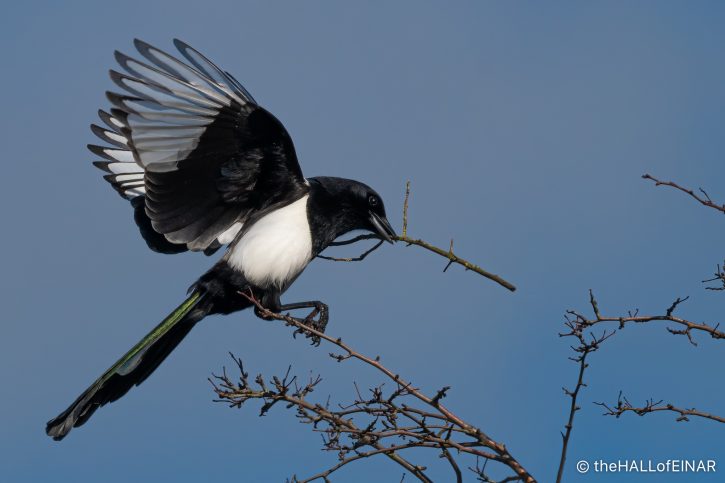
The male Magpies are the providers of much of the material for their nests. They start with large twigs which they snap or collect from the ground and trail through the skies, dragging foliage behind them. A pair of Magpies will often start several nests and experiment until they find a place they are comfortable with. They will either nest very high up in tall, swaying trees or much lower down inside the protection of a thorny bush. Once they build a firm foundation of criss-crossed twigs for the base they will begin constructing a roof over their nest. Magpie nests often look like balls of sticks, and that is what they are. They are a sphere, including a protective canopy, to ensure crows or other predators, which might prey on their eggs or chicks, are kept out. There is a convenient single side-entrance for access to the nest by the pair. With a tail as long as a Magpie’s there needs to be plenty of room inside the nest, especially since they lay six eggs and each nest will be packed with grumpy, growing chicks.
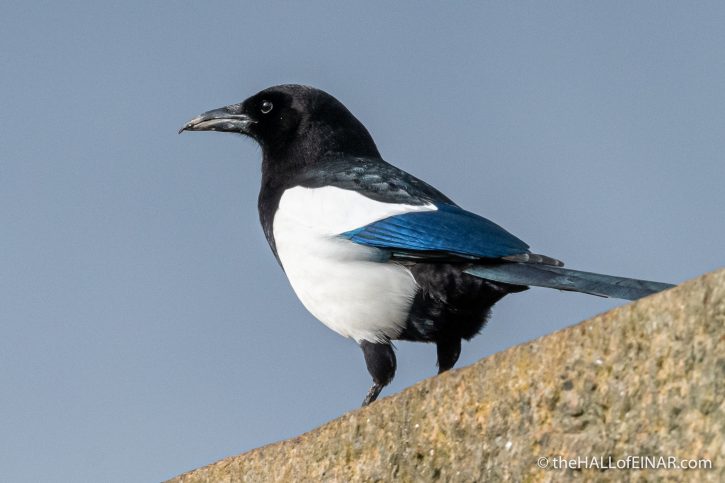
Once the main stick-structure is secure, they will begin to line it, and seal any gaps with mud. They collect large lumps of wet earth from riverbanks, streams, ponds or sodden, rutted fields and transport great beak-fulls through the air.
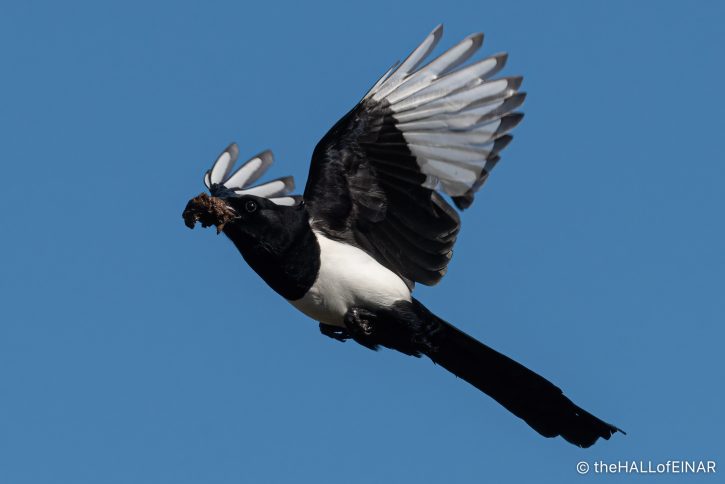
When the main structure is complete, they begin the final part of their construction which is the fine interior finish. They line the inside of the nest with a softer cup of plant stems and roots which they weave into a delicate basket to hold their precious eggs and nestlings.
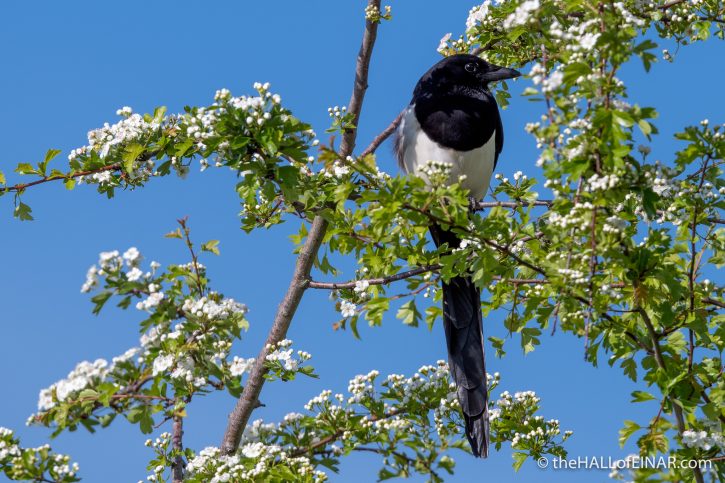
Their greenish-blue eggs are heavily spotted with brown and the female will devote nearly three weeks to incubating them, while being fed at the nest by the male. Just four weeks after hatching, the Magpie chicks will fledge, leaving the nest for a further four weeks of harassing their parents to be fed before they are independent.
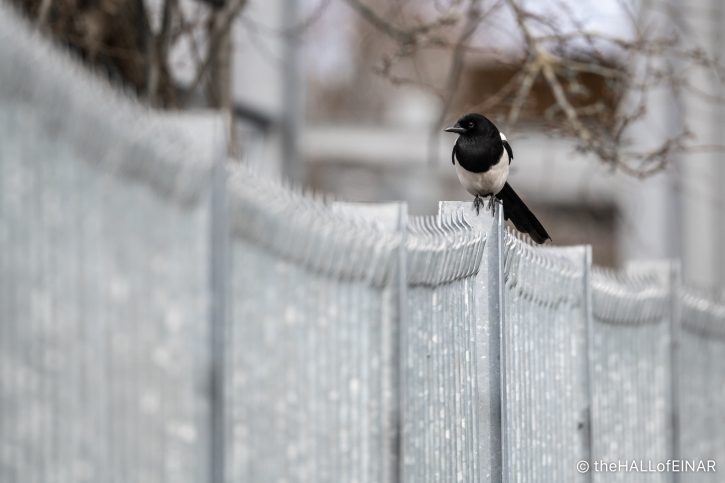
Magpies don’t begin to breed until they are two years old, yet their average life expectancy is only three years. If you see a pair in your garden, please wish them well, because they are still heavily persecuted. This summer could be the only chance they have to raise a family so that children will still be able to say, “One for sorrow, two for joy”.
[Article originally published in Ogwell Parish Newsletter]